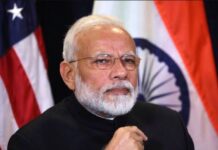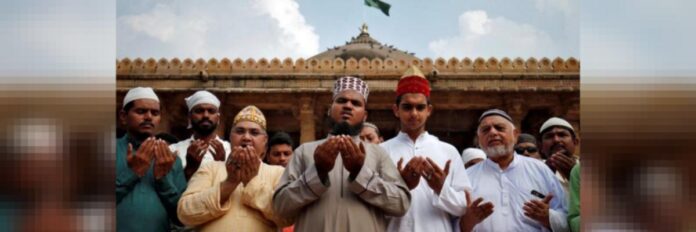In its ‘2020 Country Reports on Human Rights Practices’ to the US Congress, the Department of State found India wanting in more than a dozen significant human rights issues. These issues include unlawful and arbitrary killings, including extrajudicial killings perpetrated by police; and cases of cruel, inhuman, or degrading treatment or punishment by some police and prison officials; arbitrary arrest and detention by government authorities; harsh and life-threatening prison conditions; political prisoners or detainees in certain states; corruption and tolerance of violations of religious freedom.
The report pointed out that the National Human Rights Commission of India (NHRC) received and investigated prisoner complaints of human rights violations throughout the year. “But “civil society representatives believed few prisoners filed complaints due to fear of retribution from prison guards or officials.”
Following New Delhi’s August 2019 abrogation of a special constitutional Indian “authorities used a public safety law to detain local politicians without trial”. Those released were required to sign bonds agreeing not to engage in political activity. The US report noted that the Public Safety Act (PSA), “permits authorities to detain persons without charge or judicial review for up to two years without visitation from family members.”
The sermons in international reports or constitutional safeguards can’t equalize Indian citizens as the caste system is ordained in Hindu religious scriptures. According to the Constitution of India, “the state shall not discriminate against any citizen on grounds only of religion, race, caste, place and birth or any of them.”
Untouchability was legally abolished and its practice in any form forbidden by the Anti-Untouchability Act, of 1955. Nearly two decades later, in 1976, the 1955 Act was reviewed in order to make it more stringent and effective, and the “Protection of Civil Rights Act 1955” (PCR Act). In 1989, the government enacted yet another Act, namely the Scheduled Castes/Tribes Prevention of Atrocities Act in order to prevent atrocities against members of the Scheduled Castes and Tribes.
India’s Hindu majority is divided on the basis of “jati” or “caste.” While jati is derived from the Sanskrit word jāta (born), “caste” is derived from the Spanish/Portuguese word casta meaning race, lineage or breed. India’s caste system was derived from “the Chaturvarna system or the fourfold division of society.” This divides the society into four varnas or classes that are hierarchical in nature. On the top of this ranking are the priests (Brahmins), followed by the warriors and erstwhile rulers (Kshatriyas). The next to come are the farmers and merchants (Vaishyas), while the last in the hierarchy are the workers and craftsmen, among others (Shudras).
Religious equality in India is impossible until attitudes change. Since the Hindu caste system is rooted in scriptures, it is difficult to change. The Muslim caste system has hampered their progress in various realm of life. The paradox of belonging to Islam, a religion that is premised on the notion of equality, and at the same time imbibing local traits which affirm inequality, has to be admitted. Muslims are segmented into different status categories on the basis of income, occupation, education and lineage.
A fifth group existed outside this fourfold classification, that of the non-classified (avarnas) who did work that was, and is still considered, physically and ritually polluting, such as cremation and the handling of dead bodies, removal and skinning of dead animals, removal and cleaning of human bodily fluids and excreta (manual scavenging) and basket weaving.
Marc Galanter, in his 1969 paper, “Untouchability and the Law,” traces the relationship between the British legal system and the Indian “caste order” in colonial India.
According to the Sachar Committee Report, conditions of the Muslim in India are worse than that of dalits (downtrodden/untouchable). But, the Muslim community itself is to blame for its current plight. The Muslim literacy rate ranks well below the national average and the Muslim poverty rate is only slightly higher than the low-caste Hindu. The Muslim makes up only four percent of the undergraduate student body in India’s elite universities. He falls behind other groups in terms of access to credit. This is despite the self-employed Muslim population exceeding other groups.
According to Islam, the Muslim society is homogeneous. There is no hierarchical caste-system in Islam, like the Hindu varna system of social stratification. In Sanskrit, varna means type, order, colour or class. The term refers to social classes in dharma-shastra (religious text) books like the Manusmriti. Hindu literature classifies society into four varnas: (a) Brahmins: priests, scholars and teachers. (b) Kshatriyas: rulers, warriors and administrators. (c) Vaishyas: agriculturalists and traders. (d) Shudras: laborers and service providers.Communities which belong to one of the four varnas or classes are called savarna. The dalits and scheduled tribes who do not belong to any varna, are called avarna.
This four-fold division is a form of social stratification distinguished from jati or the European term “caste”. The varna system is discussed in Hindu texts, and understood as idealised human callings. The concept is generally traced to the Purusha Sukta verse of the Rig Veda. Contrary to these textual classifications, many Hindu texts and doctrines question and disagree with the Varna system of social classification.
Unlike the Hindu caste system, where it is easy to discern the stratification, caste identities among Muslims are not defined rigidly. As such, the reservation quota and other benefits, available to scheduled castes, do not trickle down to the needy Muslim. It is a bitter reality that the Muslim in India could not remain immune from Hindu caste-system. The Muslim is divided into into ashraaf (Muslims of foreign lineage) and ajlaaf (local converts). The ashraaf are regarded as the superior group and are mainly endogamous, while the ajlaaf are considered to be inferior. Some scholars use another category, arzaal, to denote the Muslims who converted from the lowest strata of society (bhangi, dom, churha or sweeper).
To ameliorate the lot of the downtrodden Muslim (arzal or ajlaf), there should be a caste-based census to identify those deserving ‘reservation’ in the scheduled caste. Is such a census in accordance with the definitive text of the Holy Quran?
At the top of the hierarchy are the Ashraafia (nobles), of Arab, Persian, Turkish or Afghan origin. They lay claim to a prestigious lineage that they trace back to the Prophet (in the case of Sayyids) or his tribe (in the case of Qureshis). The Shaikh (descendants of the Prophet’s companions), the Pathan (descendants of migrants from Afghanistan), and even the Mughal (originating in Central Asia and Iran) can also be included in this group. Many Ashraaf are either ulema in the case of the Sayyid, or else landowners, merchants or business people. One’s birth group constitutes a major criterion for defining social status. At the middle level, the ajlaaf (low-born) represent the masses. His status is defined by both his profession (pesha) unlike the ashraaf. Many castes of intermediate status fall into this category, such as farmers, traders and weavers (ansari and julaha). Social elite of many ashraaf in rural areas believe that this category is not part of the Indian Muslim community (millat).
At the bottom of the social scale is the arzal. It is a group comprising non-untouchables and converted “untouchables” who, as in Hinduism, practise supposedly impure trades. This was the case of slaughterers (kasai), laundrymen (dhobi), barbers (nai, hajjam), tanners (chammar), and so on.
Like the Hindu caste-ridden society, relations between Muslim social groups are governed by a social taboos like sharing a table, marriage, sociability) and spatial restrictions (access to domestic areas and places of prayer, segregation in cemeteries and neighbour-hoods).
The ashraaf opposes a caste-based count of Muslim community. But the ajlaaf and arzaal support it. The ashraaf, being a “creamy layer”, obstruct any step that may improve the lot of the downtrodden. The Indian Supreme Court decision was to exclude the “creamy layer” from the quotas in 2008. But, it was never implemented. Questions about Islam mostly relating to ibadaat like hajj are asked in Indian parliament by the non-Muslim. No question about economic justice for all and sundry is asked.
Religious equality in India is impossible until attitudes change. Since the Hindu caste system is rooted in scriptures, it is difficult to change. The Muslim caste system has hampered their progress in various realm of life. The paradox of belonging to Islam, a religion that is premised on the notion of equality, and at the same time imbibing local traits which affirm inequality, has to be admitted. Muslims are segmented into different status categories on the basis of income, occupation, education and lineage.
It is the Muslim himself who can change his lot by following Islam in full. They should resist stratification and demand equality from their community. The Muslim world at large should help them with funds.
























Again Amjed Jaaved is expressing ‘Pakistani Pre/Post Nabi Arabian Jahillya’ culture, disguising as Hinduism. Before commenting in media with such idiotic expressions, one needs to visit Makkah and watch the Brahmanism followed by families of Mulla, Shaker, Rayes, Al-Abbas, Hadrawi, Basnawi, Khouj, Marouf and Faydah right in Harem for its upkeep and understand more about the ‘Varnavyawastha’ prevelant in all societies?
My simple answer to such iditos is, “Please search some Pak media matrimony columns, search out some educated, progressive Kanjer, Choorha, Bhangi, Jamadaar, Kamin, Kunjra, Churihara, Dhobi, Hasnati, Bhanar, Halalkhor, Hijra, Kasbi, Lalbegi, Maugta, Mehtar, Mirasi, Darzi or Taki groom of Pakistan and marry your daughter/ sister to him” before making such religion based write-ups.
Amjad Jaaved, please don’t take my post as personal offence as “FOR YOU” there is NO such Jahillya in Muslims of Pakistan. Saale Sab Ke Sab followers of “Pre/ Post Nabi Arabian Cutural Jahillya (in the name of ‘Noor-e-illahi’)” Kanjar’s of the Land of Pure, are Doodh Ke Dhule Hue Hain. 😅😅😅